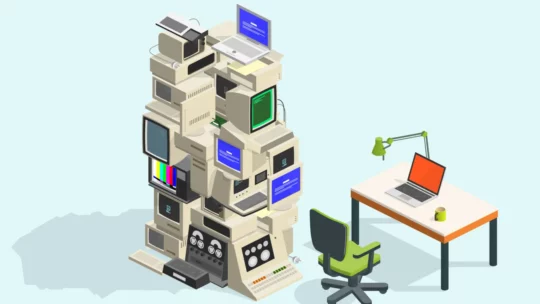Widespread internet access shaped the 1990s. The smartphone defined the last decade. Now, the cloud is having a similarly powerful impact and becoming the defining technology of our times, providing the computational and analytical power to transform customer service, marketing, commerce, transportation, exploration, medicine, and government services.
But the mere adoption of new technologies does not magically produce transformational business results. Digital transformation is not simply a matter of migrating to the cloud. Success demands a significant rethink of CIO and CTO responsibilities, with the roles defined less by the siloed infrastructure and software curation that have long defined IT, and more by cross-functional strategic mandates to expand revenue, discover new opportunities, and devise new business models.
That’s not to say technical responsibilities have disappeared. Just moving applications, services, and workloads to a public cloud can involve navigating processor families, networking topologies, identity integrations, message queuing, data warehousing, analytical tools, and more. Such a move requires a tailored implementation that takes into account hundreds of moving parts across a vast technological landscape and crosses traditional boundaries of IT, engineering, finance, marketing, and sales.
But for today’s IT leaders, technical logistics and system complexity are just the beginning. Technology not only enables business strategies but also, because of the data needed to feed these strategies and the continuous product iteration required to execute them, shapes how the strategies should evolve.
For example, IDG’s 2019 State of the CIO survey finds that 81% of CIOs see their roles expanding to include new responsibilities such as data analytics, operations, business development, customer service, and product development. And 62% say they’re being asked to create new revenue streams. IT leaders report that security management and operations currently occupy much of their time, but that business innovation, strategy, and other cross-functional responsibilities are expected to increasingly dominate their workdays.
All of this means the daily routine of today’s successful IT leader bears little resemblance to the routine of a few years ago. Gone are the days when the CIO was given an affordability target by the CEO and the board and expected to return weeks or months later with a plan. Likewise, it’s no longer tenable for the CTO and line-of-business leader to work in isolation on a new platform for months or years, only to hit a wall when it has to scale and be integrated into the core IT baseline of the larger organization.
The pace of today’s market necessitates a new, cross-functional approach to business strategy, planning, execution, and learning. And this new approach must be always on and constantly refreshed, like a continuous integration/continuous deployment of business strategy in which technical leaders and business executives work hand in hand.
For these reasons, I believe IT leadership functions must change not only in organizations across the board but specifically within the tech companies helping to enable the cloud and digital transformation strategies of the world’s enterprises. We in the enterprise tech community must do more than simply develop products that we sell to others—at least if we hope to be great partners and strategic enablers for our customers.
…







